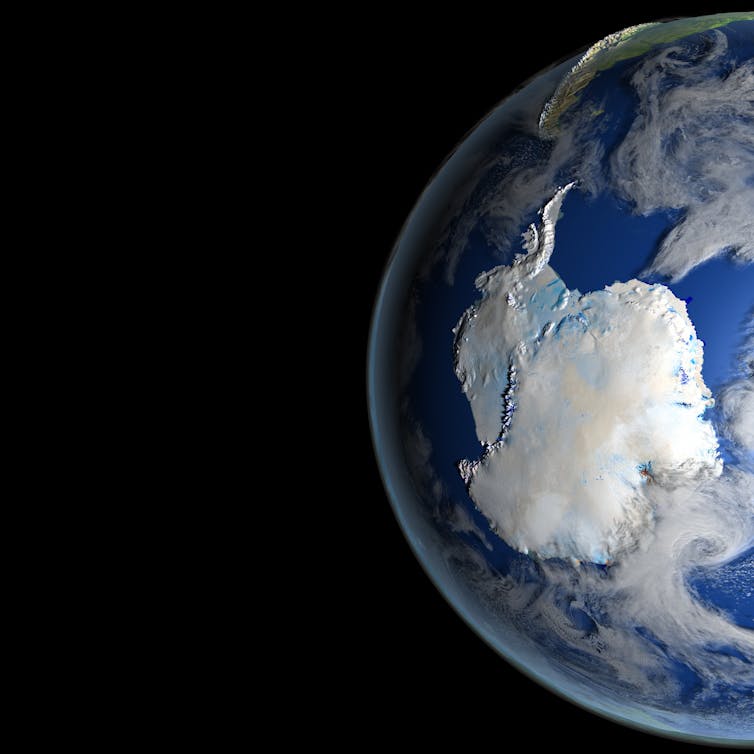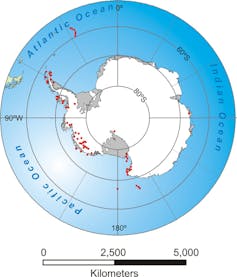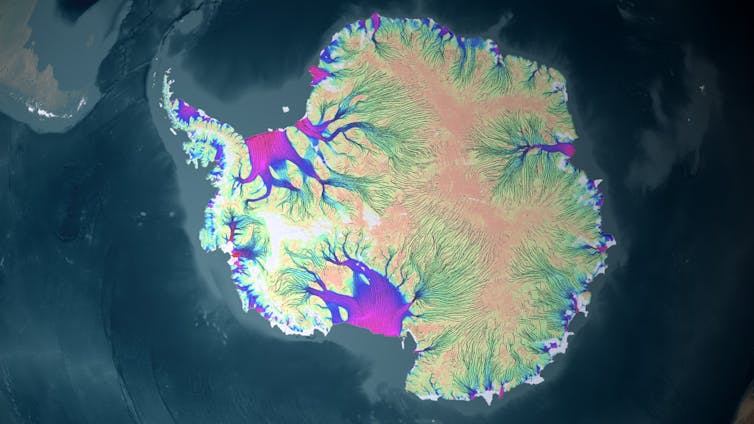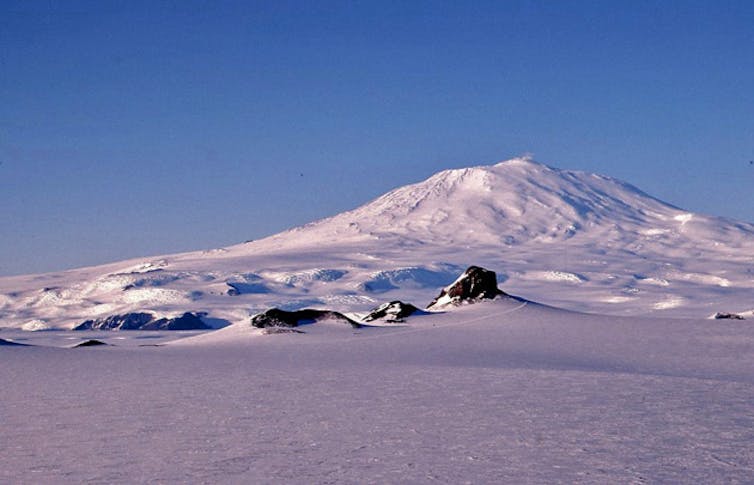
Antarctica is a vast icy wasteland covered by the world’s largest ice sheet. This ice sheet contains about 90% of fresh water on the planet. It acts as a massive heat sink and its meltwater drives the world’s oceanic circulation. Its existence is therefore a fundamental part of Earth’s climate.
Less well known is that Antarctica is also host to several active volcanoes, part of a huge “volcanic province” which extends for thousands of kilometres along the western edge of the continent. Although the volcanic province has been known and studied for decades, about 100 “new” volcanoes were recently discovered beneath the ice by scientists who used satellite data and ice-penetrating radar to search for hidden peaks.

These sub-ice volcanoes may be dormant. But what would happen if Antarctica’s volcanoes awoke?
We can get some idea by looking to the past. One of Antarctica’s volcanoes, Mount Takahe, is found close to the remote centre of the West Antarctic Ice Sheet. In a new study, scientists implicate Takahe in a series of eruptions rich in ozone-consuming halogens that occurred about 18,000 years ago.
These eruptions, they claim, triggered an ancient ozone hole, warmed the southern hemisphere which caused glaciers to melt, and helped bring the last ice age to a close.

This sort of environmental impact is unusual. For it to happen again would require a series of eruptions, similarly enriched in halogens, from one or more volcanoes that are currently exposed above the ice. Such a scenario is unlikely although, as the Takahe study shows, not impossible. More likely is that one or more of the many subglacial volcanoes, some of which are known to be active, will erupt at some unknown time in the future.
Eruptions below the ice
Because of the enormous thickness of overlying ice, it is unlikely that volcanic gases would make it into the atmosphere. So an eruption wouldn’t have an impact like that postulated for Takahe. However, the volcanoes would melt huge caverns in the base of the ice and create enormous quantities of meltwater. Because the West Antarctic Ice Sheet is wet rather than frozen to its bed – imagine an ice cube on a kitchen work top – the meltwater would act as a lubricant and could cause the overlying ice to slip and move more rapidly. These volcanoes can also stabilise the ice, however, as they give it something to grip onto – imagine that same ice cube snagging onto a lump-shaped object.In any case, the volume of water that would be generated by even a large volcano is a pinprick compared with the volume of overlying ice. So a single eruption won’t have much effect on the ice flow. What would make a big difference, is if several volcanoes erupt close to or beneath any of West Antarctica’s prominent “ice streams”.

Ice streams are rivers of ice that flow much faster than their surroundings. They are the zones along which most of the ice in Antarctica is delivered to the ocean, and therefore fluctuations in their speed can affect the sea level. If the additional “lubricant” provided by multiple volcanic eruptions was channelled beneath ice streams, the subsequent rapid flow may dump unusual amounts of West Antarctica’s thick interior ice into the ocean, causing sea levels to rise.
Under-ice volcanoes are probably what triggered rapid flow of ancient ice streams into the vast Ross Ice Shelf, Antarctica’s largest ice shelf. Something similar might have occurred about 2,000 years ago with a small volcano in the Hudson Mountains that lie underneath the West Antarctica Ice Sheet – if it erupted again today it could cause the nearby Pine Island Glacier to speed up.
The volcano–ice melt feedback loop
Most dramatically of all, a large series of eruptions could destabilise many more subglacial volcanoes. As volcanoes cool and crystallise, their magma chambers become pressurised and all that prevents the volcanic gases from escaping violently in an eruption is the weight of overlying rock or, in this case, several kilometres of ice. As that ice becomes much thinner, the pressure reduction may trigger eruptions. More eruptions and ice melting would mean even more meltwater being channelled under the ice streams.
Potentially a runaway effect may take place, with the thinning ice triggering more and more eruptions. Something similar occurred in Iceland, which saw an increase in volcanic eruptions when glaciers began to recede at the end of the last ice age.
So it seems the greatest threat from Antarctica’s many volcanoes will be if several erupt within a few decades of each other. If those volcanoes have already grown above the ice and their gases were rich in halogens then enhanced warming and rapid deglaciation may result. But eruptions probably need to take place repeatedly over many tens to hundreds of years to have a climatic impact.
John Smellie, Professor of Volcanology, University of Leicester
This article was originally published on The Conversation.
No comments:
Post a Comment